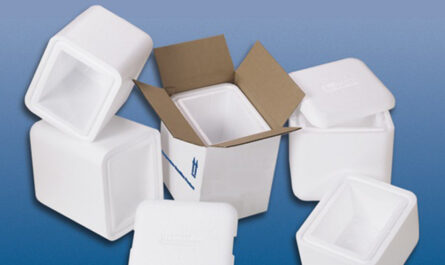Micro Packaging Market:
Micro packaging refers to packaging materials and processes used for very small products or components. With the rapid growth of miniaturization in areas like electronics, healthcare and more, the need for specialized micro packaging solutions has increased tremendously. This article explores the various aspects of micro packaging including applications, materials used, challenges faced and emerging trends in the industry.
Applications of Micro Packaging
Micro packaging finds applications in diverse industries where small components need protection. Some key application areas include:
Electronics – Integrated circuits, microchips, circuit boards and other tiny electronic components require protective micro packaging during manufacturing, shipping and use. Materials like laminates, films and bubbles packs are commonly used.
Medical Devices – Implants, medical diagnostic tools, biosensors and drug delivery devices often use micro packaging for sterilization and transportation. Tyvek and foil packaging are popular choices.
Pharmaceuticals – Microencapsulation is used to package active ingredients in medicinal pills and capsules. This helps control drug release and absorption in the body. Polymers like cellulose are commonly used.
Other Industries – Precision manufacturing industries like optics and aerospace also require specialized micro packaging for miniature components. Food packaging also uses micro encapsulation technique for flavors and nutrients.
Materials Used for Micro Packaging
Due to the small size of components handled, micro packaging materials need to provide maximum protection using minimal material. Some of the commonly used materials include:
Polymers – Thermoplastics like polypropylene, polystyrene and thermosets like epoxy offer durability and various processing options for micro packaging containers and lids.
Metals – Aluminum foils provide excellent barrier protection and are lightweight. They are often laminated or coated for added functionality.
Paper/Paperboard – Materials like Tyvek and kraft paper offer breathability and printability for medical and pharmaceutical micro packaging.
Glass – Used for very small vials and ampoules in medical and laboratory applications due to its inertness and transparency.
Elastomers – Silicones, rubbers provide flexibility and sealability in closures for micro containers and blister packs.
Challenges in Micro Packaging
While offering several advantages, micro packaging also presents unique production, handling and quality challenges:
Precision Manufacturing – Fabricating packaging materials and containers at micro levels requires highly engineered tools and processes for tight tolerances. Even minor variability can cause defects.
Contamination Control – Managing particulate and chemical contamination is critical at small scales. Swabbing, vacuum environments and rapid changeover systems are often needed.
Ultra Clean Rooms – Very high ISO rated clean rooms with strict protocols are essential for aseptic or contamination sensitive micro packaging operations.
Fragility – Small components and packages are more prone to damage during automated handling, shipping/distribution due to lack of material robustness at low weights. Special care needs to be taken.
Quality Testing – Traditional quality testing methods need to be modified or new techniques developed to accurately inspect micro packages and validate performance at microscopic levels.
Emerging Trends in Micro Packaging
To address ongoing challenges and market needs, continuous innovation is taking place in the field of micro packaging:
Miniaturization – Packages are getting smaller driven by mini/nano electronic and medical technologies. Novel 3D forming and assembly approaches are enabling this.
Sustainable Materials – Biopolymers, recycled plastics and green processes are gaining traction to make micro packaging more environmentally friendly.
Integration of Functions – Multifunctional intelligent packages with sensing, identification or dispensing functions integrated directly into packages using printed electronics or material engineering techniques.
Aseptic Technologies – Novel containment solutions like ethylene oxide replacement sterilization, barrier films and laser welding are enhancing asepsis assurance in pharmaceutical micro packaging.
Smart Packaging – Connected devices, data analytics, augmented reality and sensors are integrating with packages to provide real-time tracking, inventory management, authentication and personalization features especially in medical applications.
The micro packaging industry will continue to evolve rapidly, driven both by new technological advances downstream in micro/nano systems as well as innovations happening within packaging itself. Sustainable, smart and multifunctional solutions hold significant promise to enhance protection, usability and effectiveness of micro packaging for the future.
Micro packaging presents unique requirements compared to traditional packaging due to intricate nature of small components handled. Outstanding functionality must be delivered using minimal materials in an environmentally sustainable way. Continuous innovation across materials, processes, cleanroom technologies and integration of smart features will be important to address the evolving needs of micro/nano technologies relying on effective micro packaging solutions. Overall, micro packaging is a specialized field that will continue experiencing rapid technological evolution in the years to come.
Note:
1. Source: Coherent Market Insights, Public sources, Desk research
2. We have leveraged AI tools to mine information and compile it




